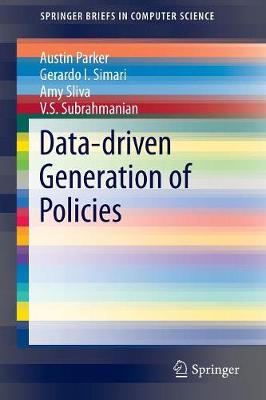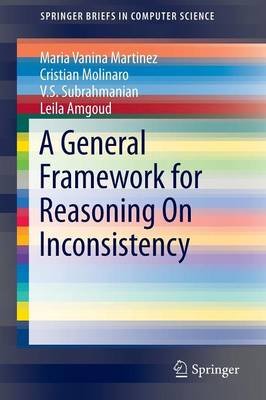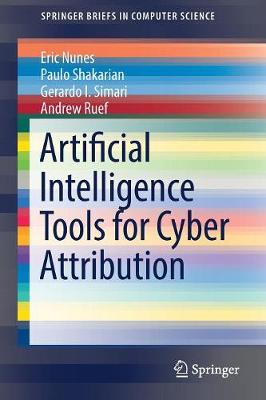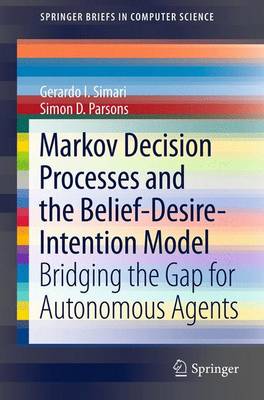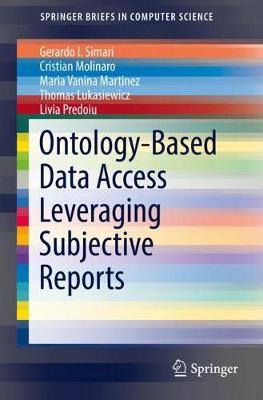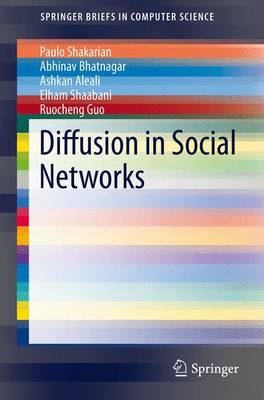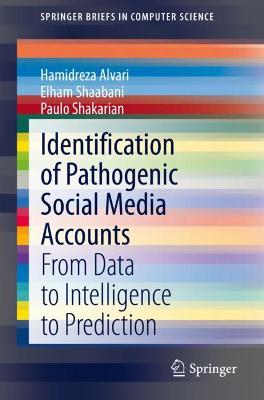SpringerBriefs in Computer Science
8 total works
Data-driven Generation of Policies
by Austin Parker, Gerardo I. Simari, Amy Sliva, and V.S. Subrahmanian
A General Framework for Reasoning On Inconsistency
by Maria Vanina Martinez, Cristian Molinaro, V.S. Subrahmanian, and Leila Amgoud
Artificial Intelligence Tools for Cyber Attribution
by Eric Nunes, Paulo Shakarian, Gerardo I. Simari, and Andrew Ruef
This SpringerBrief discusses how to develop intelligent systems for cyber attribution regarding cyber-attacks. Specifically, the authors review the multiple facets of the cyber attribution problem that make it difficult for “out-of-the-box” artificial intelligence and machine learning techniques to handle.
Attributing a cyber-operation through the use of multiple pieces of technical evidence (i.e., malware reverse-engineering and source tracking) and conventional intelligence sources (i.e., human or signals intelligence) is a difficult problem not only due to the effort required to obtain evidence, but the ease with which an adversary can plant false evidence.
This SpringerBrief not only lays out the theoretical foundations for how to handle the unique aspects of cyber attribution – and how to update models used for this purpose – but it also describes a series of empirical results, as well as compares results of specially-designed frameworks for cyber attribution to standard machine learning approaches.
Cyber attribution is not only a challenging problem, but there are also problems in performing such research, particularly in obtaining relevant data. This SpringerBrief describes how to use capture-the-flag for such research, and describes issues from organizing such data to running your own capture-the-flag specifically designed for cyber attribution. Datasets and software are also available on the companion website.
Markov Decision Processes and the Belief-Desire-Intention Model
by Gerardo I. Simari and Simon D. Parsons
In this work, we provide a treatment of the relationship between two models that have been widely used in the implementation of autonomous agents: the Belief DesireIntention (BDI) model and Markov Decision Processes (MDPs). We start with an informal description of the relationship, identifying the common features of the two approaches and the differences between them. Then we hone our understanding of these differences through an empirical analysis of the performance of both models on the TileWorld testbed. This allows us to show that even though the MDP model displays consistently better behavior than the BDI model for small worlds, this is not the case when the world becomes large and the MDP model cannot be solved exactly. Finally we present a theoretical analysis of the relationship between the two approaches, identifying mappings that allow us to extract a set of intentions from a policy (a solution to an MDP), and to extract a policy from a set of intentions.
Ontology-Based Data Access Leveraging Subjective Reports
by Gerardo I. Simari, Cristian Molinaro, Maria Vanina Martinez, Thomas Lukasiewicz, and Livia Predoiu
This SpringerBrief reviews the knowledge engineering problem of engineering objectivity in top-k query answering; essentially, answers must be computed taking into account the user's preferences and a collection of (subjective) reports provided by other users. Most assume each report can be seen as a set of scores for a list of features, its author's preferences among the features, as well as other information is discussed in this brief. These pieces of information for every report are then combined, along with the querying user's preferences and their trust in each report, to rank the query results. Everyday examples of this setup are the online reviews that can be found in sites like Amazon, Trip Advisor, and Yelp, among many others.
Throughout this knowledge engineering effort the authors adopt the Datalog+/- family of ontology languages as the underlying knowledge representation and reasoning formalism, and investigate several alternative ways in which rankings can b
e derived, along with algorithms for top-k (atomic) query answering under these rankings. This SpringerBrief also investigate assumptions under which our algorithms run in polynomial time in the data complexity.
Since this SpringerBrief contains a gentle introduction to the main building blocks (OBDA, Datalog+/-, and reasoning with preferences), it should be of value to students, researchers, and practitioners who are interested in the general problem of incorporating user preferences into related formalisms and tools. Practitioners also interested in using Ontology-based Data Access to leverage information contained in reviews of products and services for a better customer experience will be interested in this brief and researchers working in the areas of Ontological Languages, Semantic Web, Data Provenance, and Reasoning with Preferences.
Diffusion in Social Networks
by Paulo Shakarian, Abhivav Bhatnagar, Ashkan Aleali, Elham Shaabani, and Ruocheng Guo
The book explores numerous connections between social network diffusion research and artificial intelligence through topics such as agent-based modeling, logic programming, game theory, learning, and data mining. The book also surveys key empirical results in social network diffusion, and reviews the classic and cutting-edge research with a focus on open problems.
Identification of Pathogenic Social Media Accounts
by Hamidreza Alvari, Elham Shaabani, and Paulo Shakarian
Over the past years, social media has played a major role in massive dissemination of misinformation online. Political events and public opinion on the Web have been allegedly manipulated by several forms of accounts including “Pathogenic Social Media (PSM)” accounts (e.g., ISIS supporters and fake news writers). PSMs are key users in spreading misinformation on social media - in viral proportions. Early identification of PSMs is thus of utmost importance for social media authorities in an effort toward stopping their propaganda. The burden falls to automatic approaches that can identify these accounts shortly after they began their harmful activities.
Researchers and advanced-level students studying and working in cybersecurity, data mining, machine learning, social network analysis and sociology will find this book useful. Practitioners of proactive cyber threat intelligence and social media authorities will also find this book interesting and insightful, as it presents an important and emerging type of threat intelligence facing social media and the general public.
Neuro Symbolic Reasoning and Learning
by Paulo Shakarian, Chitta Baral, Gerardo I. Simari, Bowen Xi, and Lahari Pokala
This book provides a broad overview of the key results and frameworks for various NSAI tasks as well as discussing important application areas. This book also covers neuro symbolic reasoning frameworks such as LNN, LTN, and NeurASP and learning frameworks. This would include differential inductive logic programming, constraint learning and deep symbolic policy learning. Additionally, application areas such a visual question answering and natural language processing are discussed as well as topics such as verification of neural networks and symbol grounding. Detailed algorithmic descriptions, example logic programs, and an online supplement that includes instructional videos and slides provide thorough but concise coverage of this important area of AI.
Neuro symbolic artificial intelligence (NSAI) encompasses the combination of deep neural networks with symbolic logic for reasoning and learning tasks. NSAI frameworks are now capable of embedding priorknowledge in deep learning architectures, guiding the learning process with logical constraints, providing symbolic explainability, and using gradient-based approaches to learn logical statements. Several approaches are seeing usage in various application areas.
This book is designed for researchers and advanced-level students trying to understand the current landscape of NSAI research as well as those looking to apply NSAI research in areas such as natural language processing and visual question answering. Practitioners who specialize in employing machine learning and AI systems for operational use will find this book useful as well.
